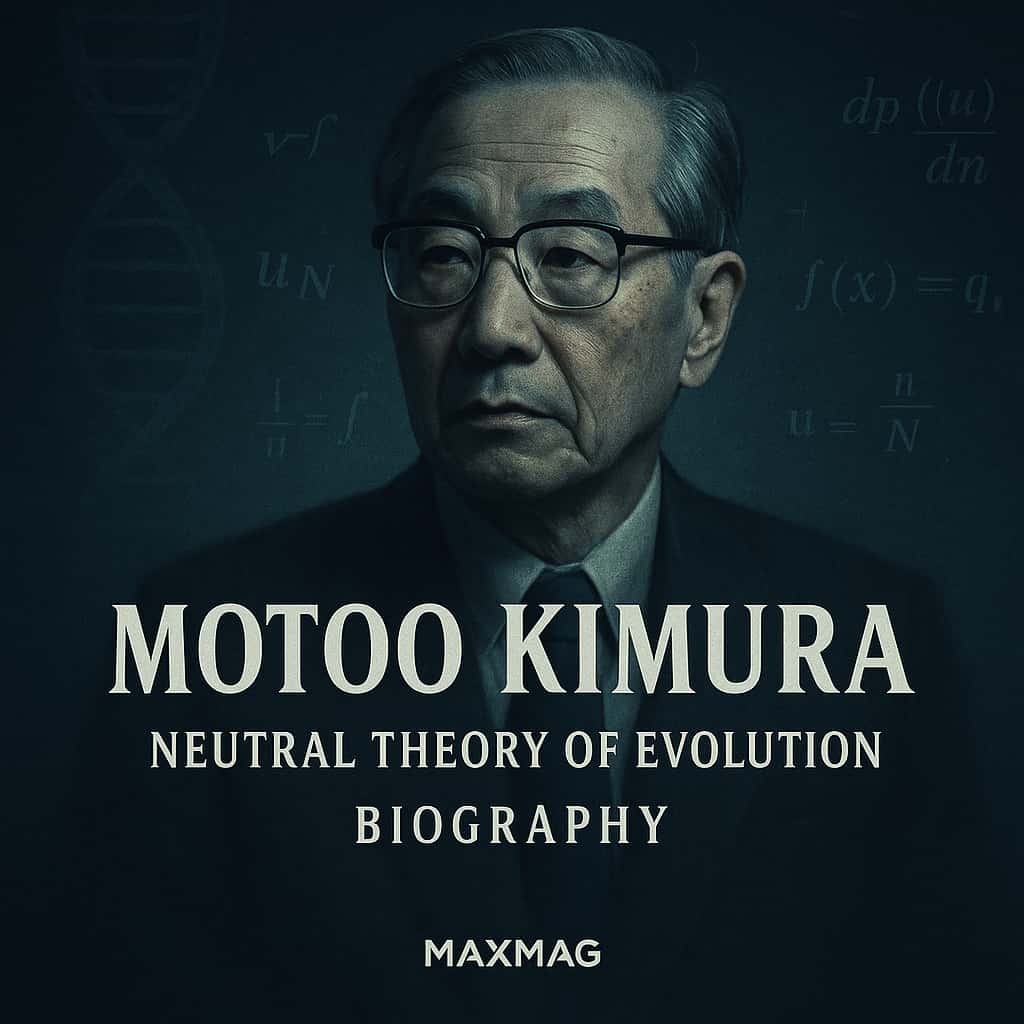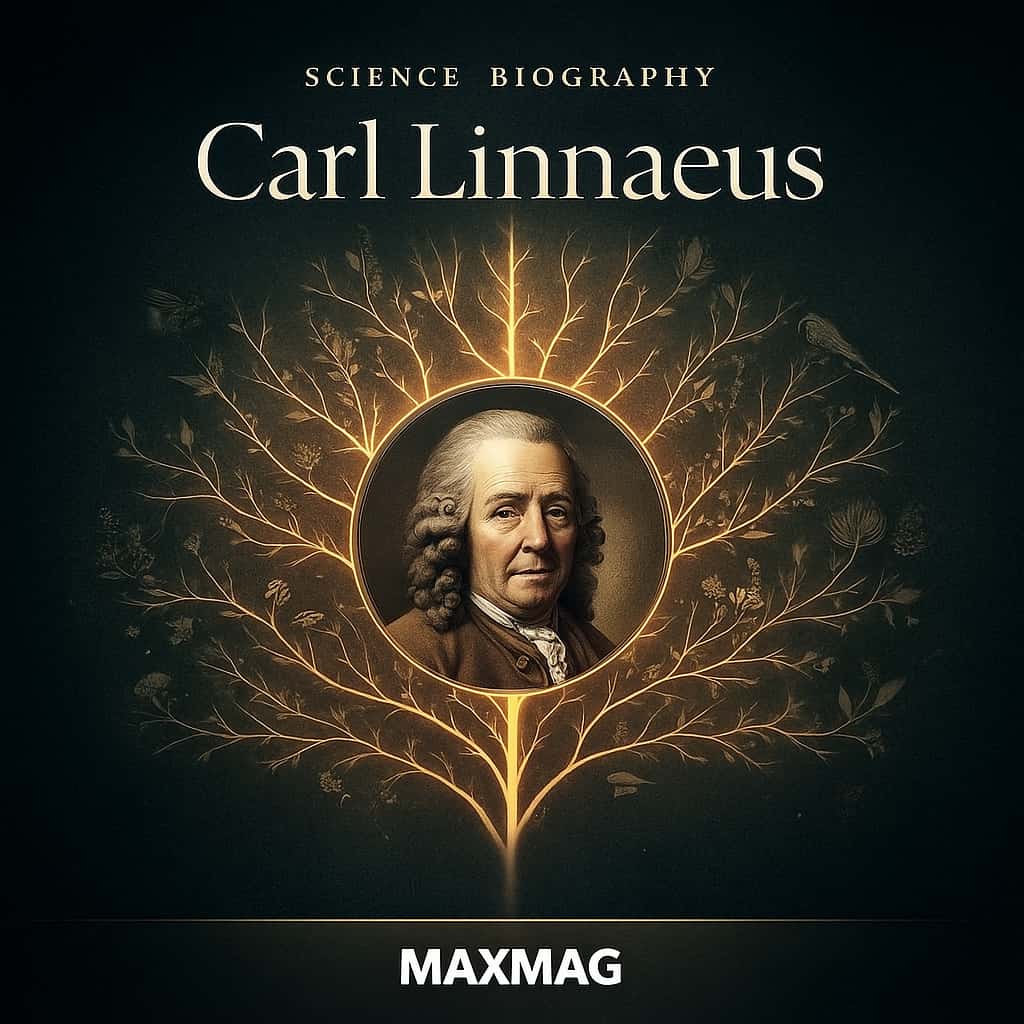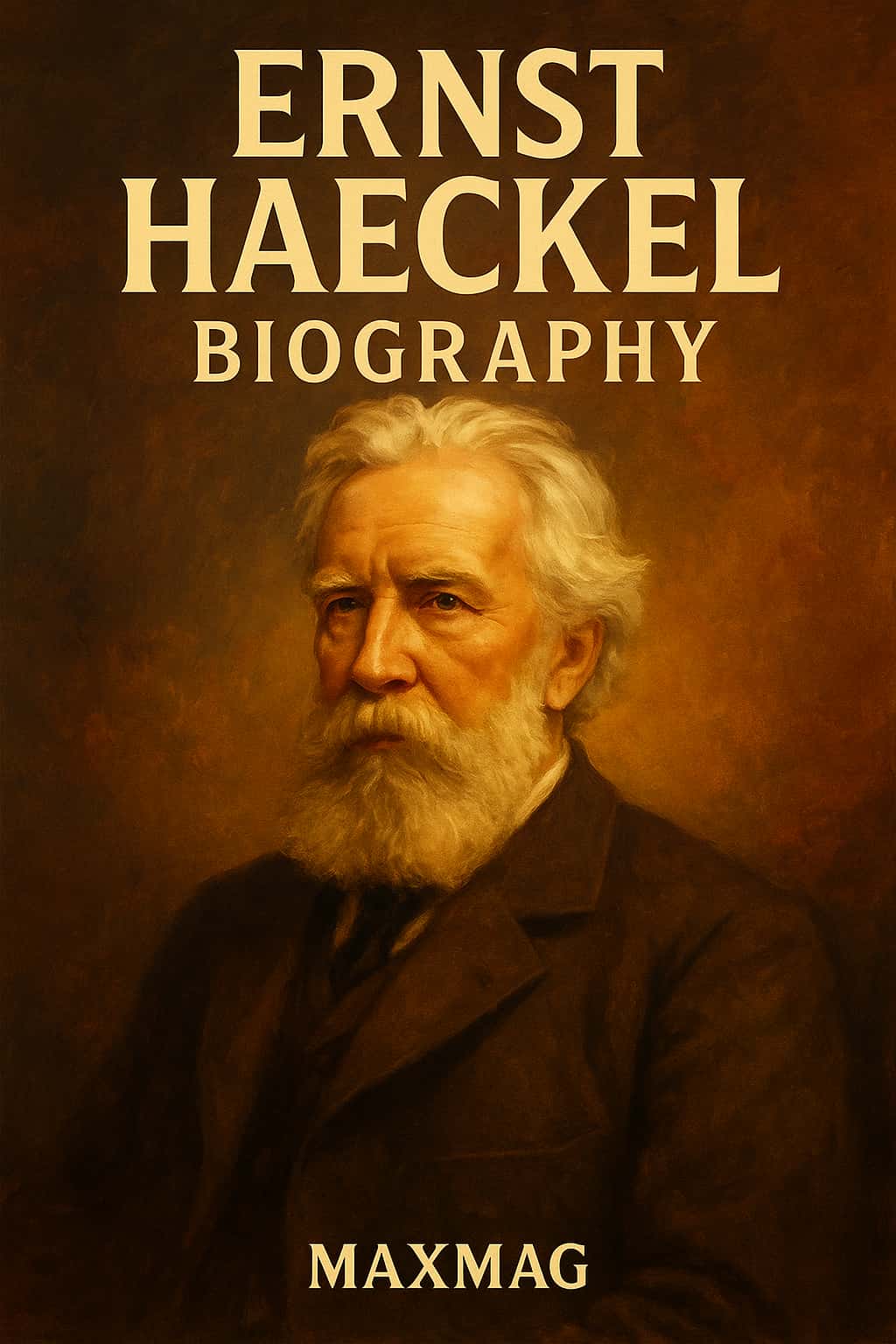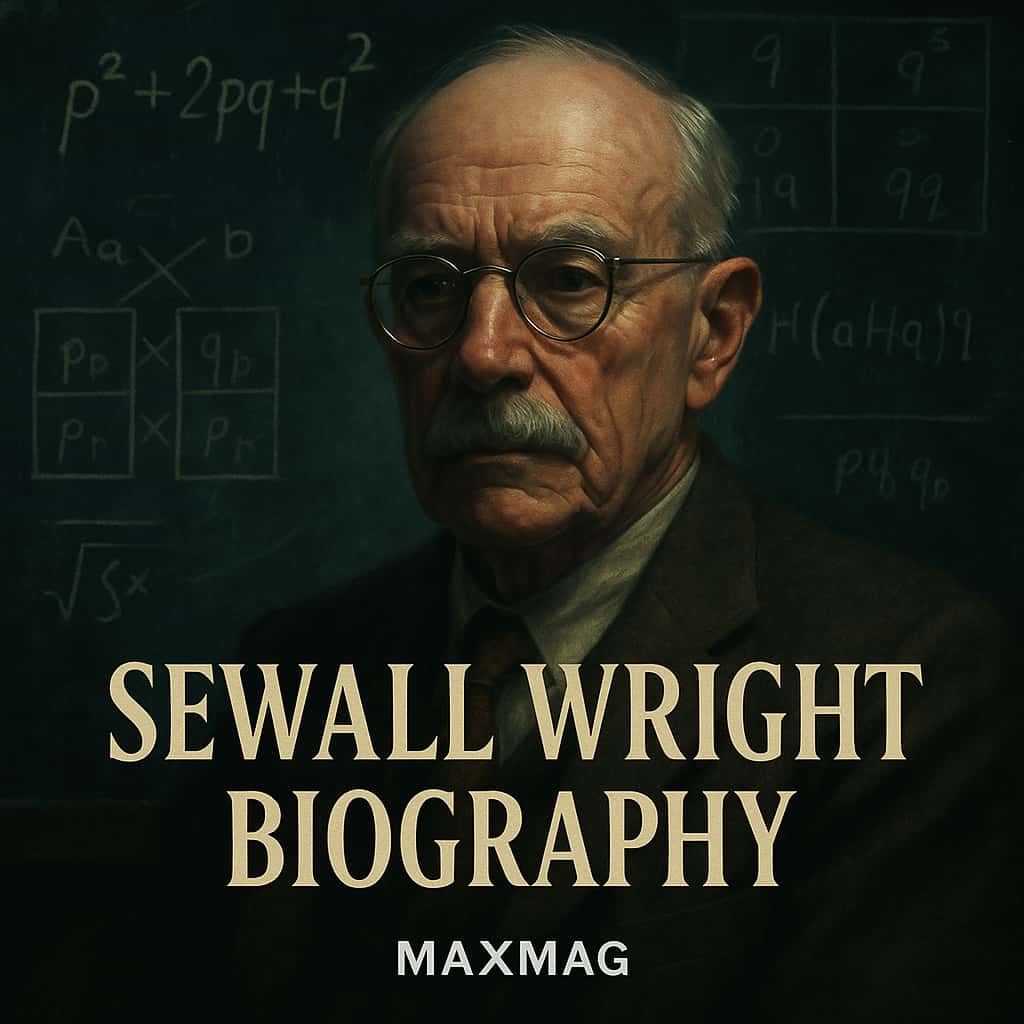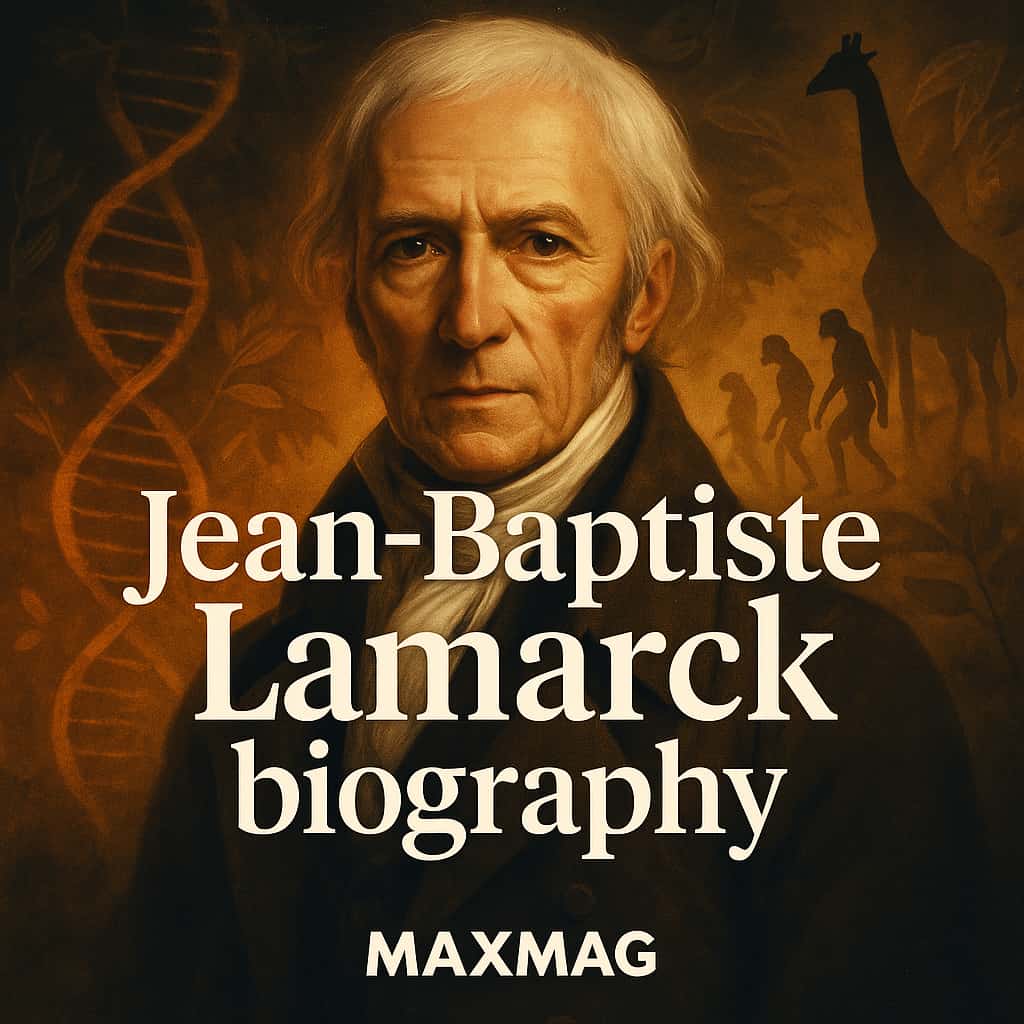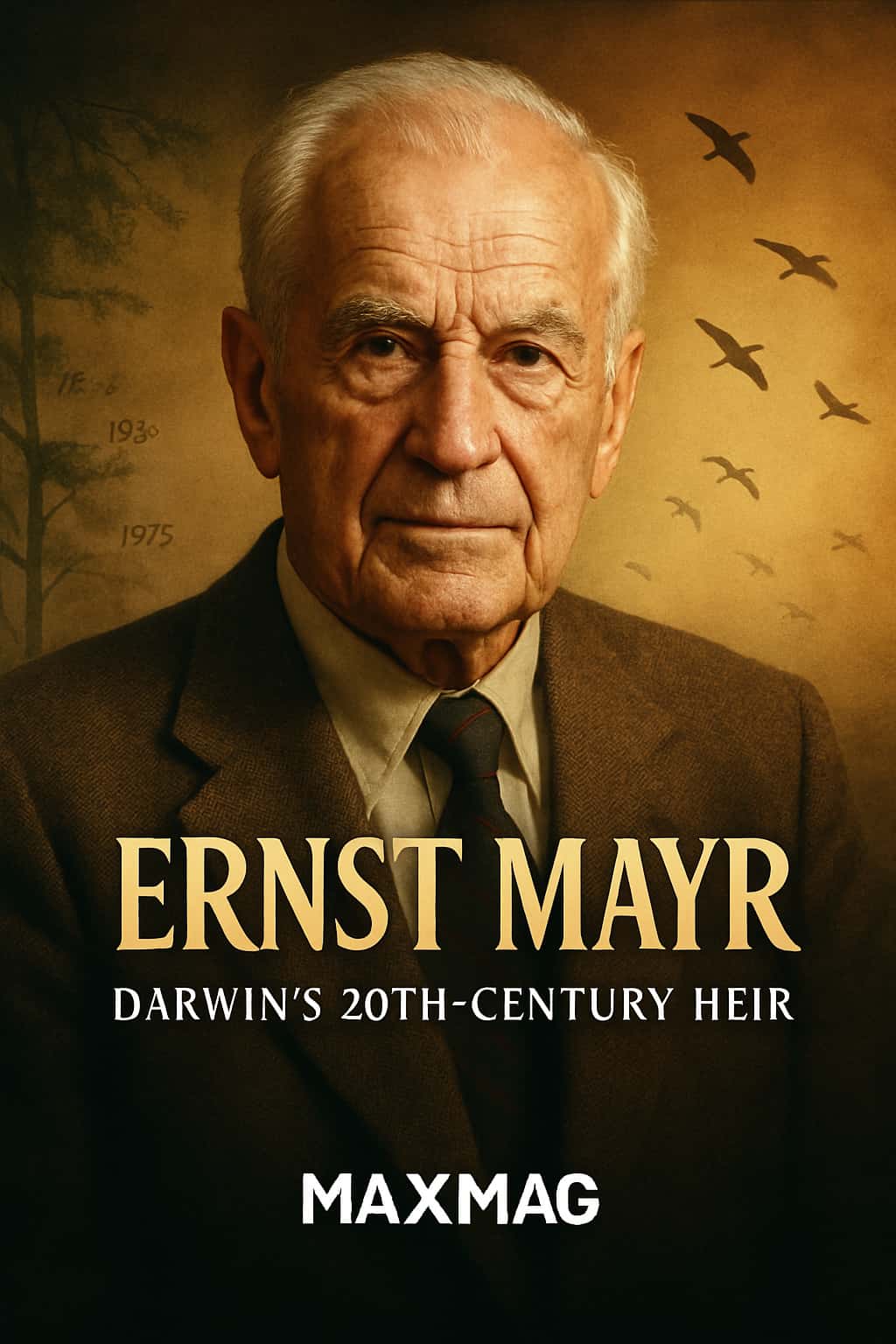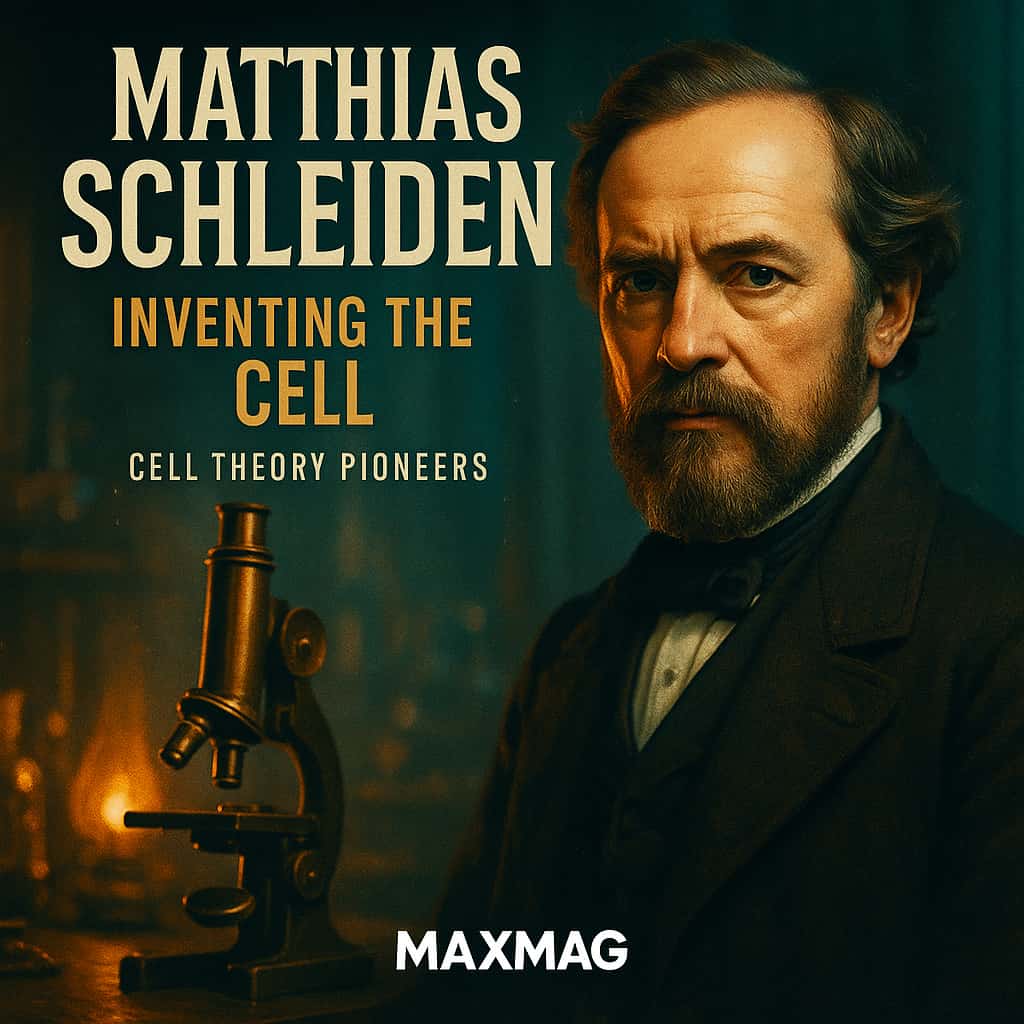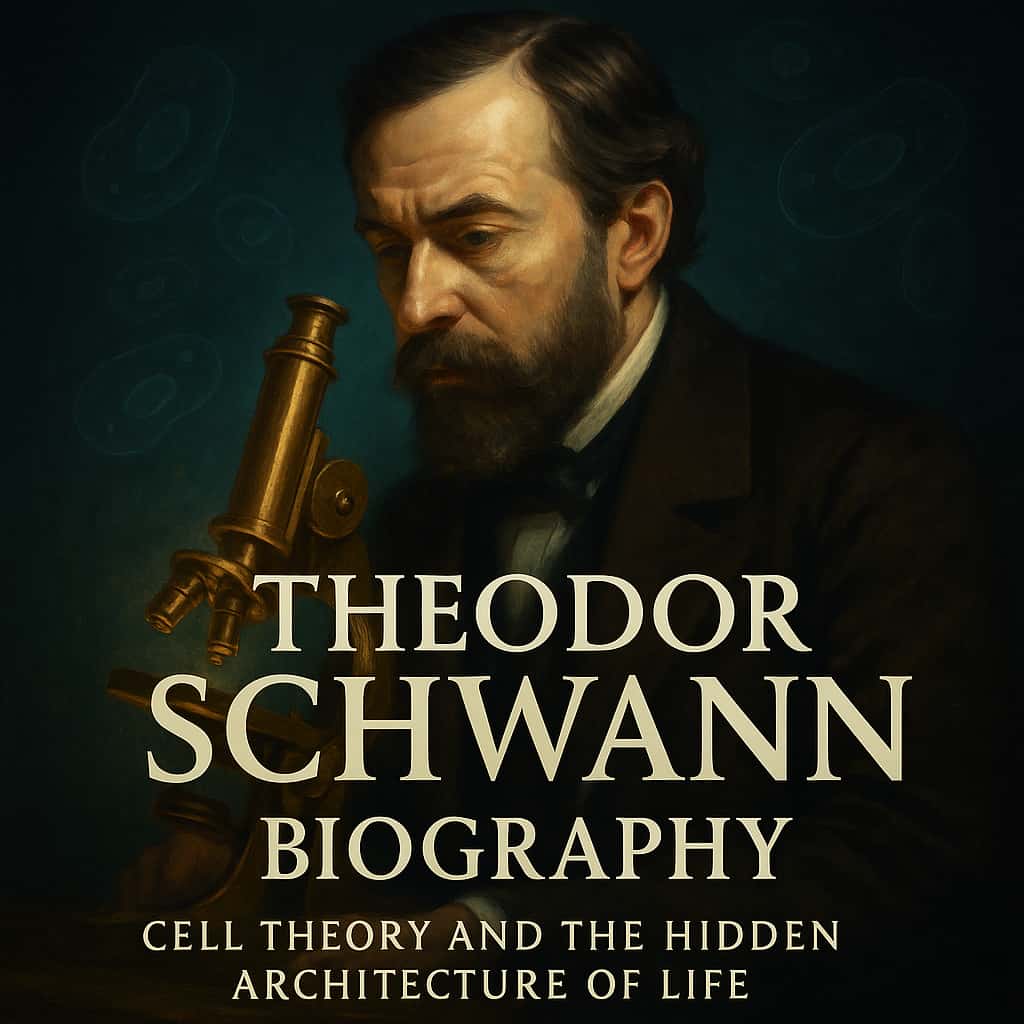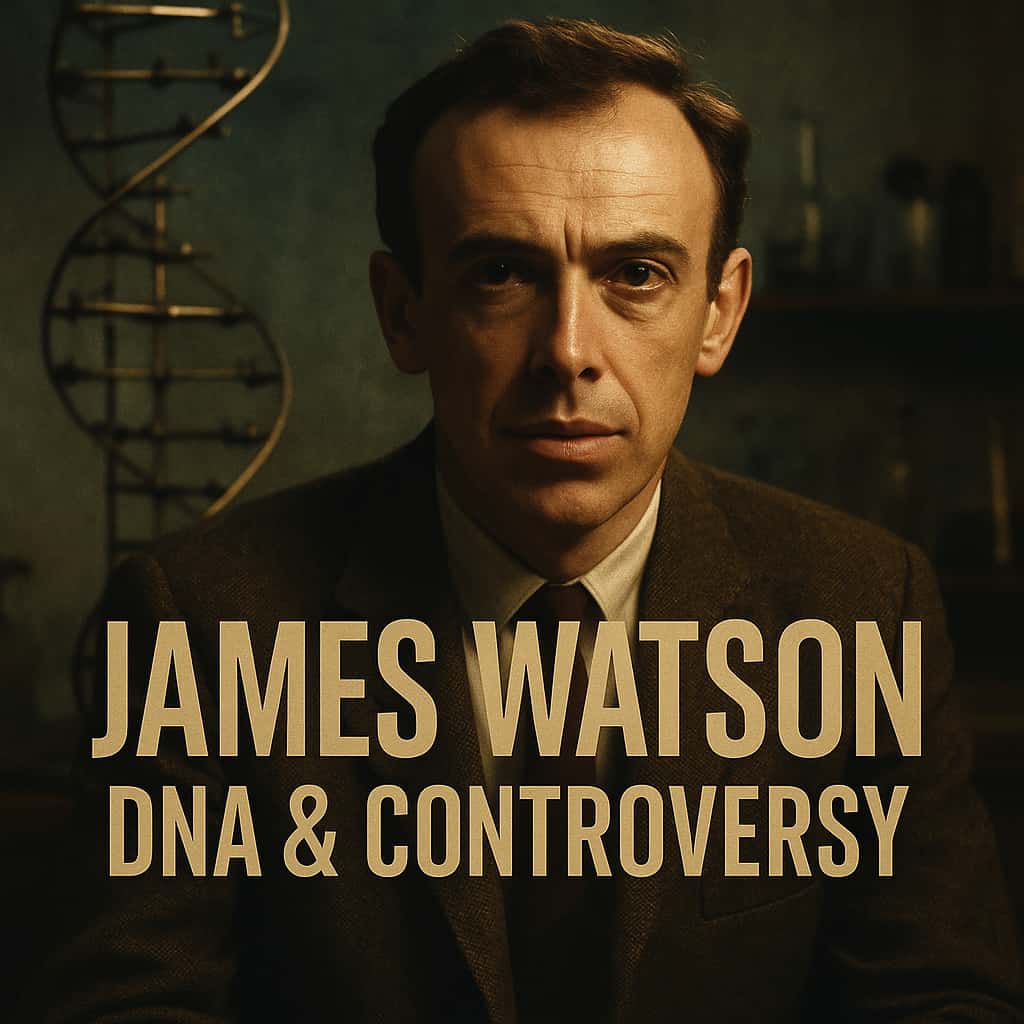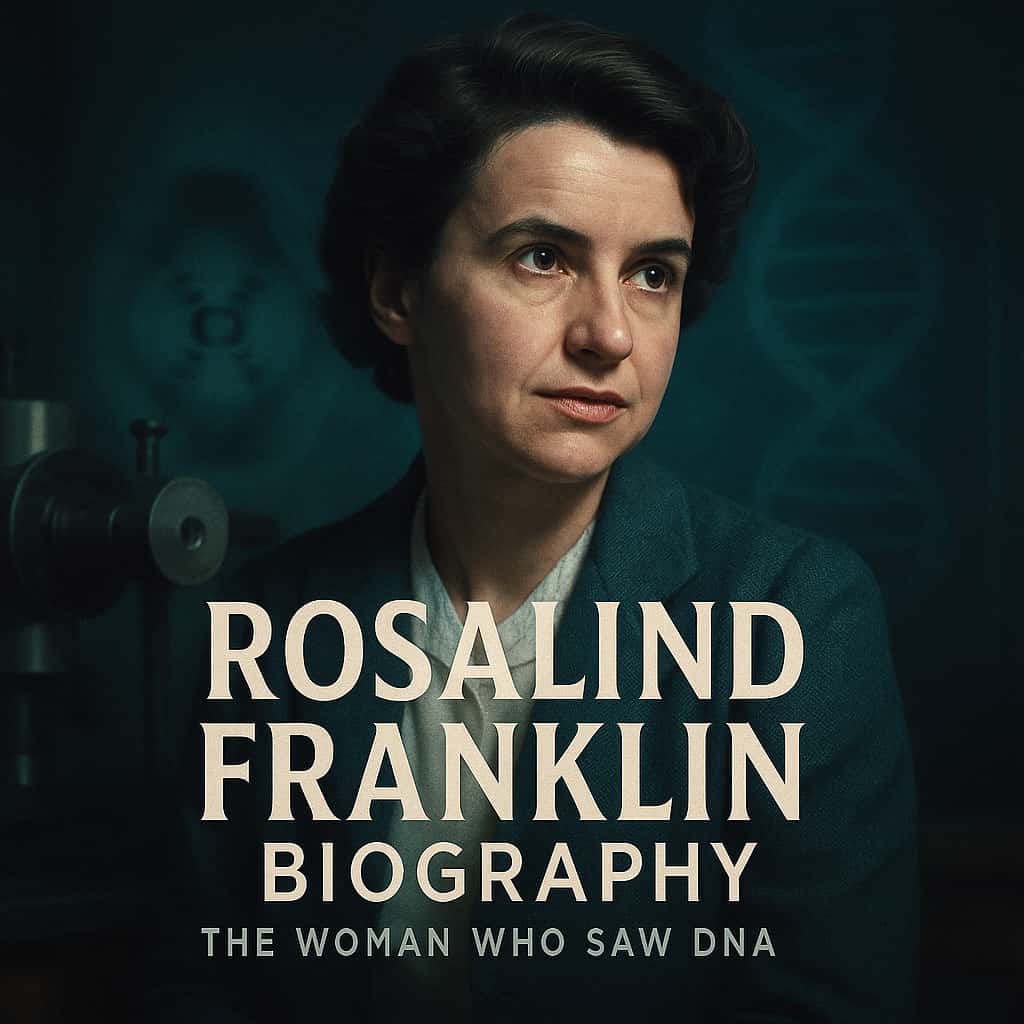
The Rosalind Franklin biography is often told as a story of a brilliant woman cheated of her place in history: the scientist whose X-ray photograph unlocked the double helix, while others walked away with the Nobel Prize. It is a compelling tale – sharp, tragic, and easy to summarise. But like most neat narratives, it leaves a great deal out. Franklin’s life ranged far beyond one famous image, from wartime coal research to the inner architecture of viruses, and her presence still lingers in arguments about who gets credit in science and who is written out of the record.
To understand the Rosalind Franklin biography is to step into the laboratories, London offices and smoky committee rooms of mid-20th-century science – an era when physics, chemistry and biology began to merge into molecular biology, and when a Jewish woman from a London banking family could become, almost despite the times, one of the crucial figures in that transformation. Her story is not just about the discovery of DNA’s structure; it is also about method, integrity and the long, often invisible labour behind breakthrough moments.
Rosalind Franklin at a glance
- Who: Rosalind Elsie Franklin (1920–1958), English chemist and X-ray crystallographer.
- Field and era: Physical chemistry and early molecular biology in mid-20th-century science.
- Headline contributions: Crucial X-ray diffraction data for DNA’s double-helix model; fundamental work on coal and carbon; pioneering studies of viruses such as tobacco mosaic virus.
- Why she matters today: A Rosalind Franklin biography illuminates how modern genetics was built and why questions of credit, collaboration and gender still shape scientific life.
Rosalind Franklin biography: Early life and education
A London childhood and a mind set on science
Rosalind Franklin was born on 25 July 1920 in Notting Hill, London, into a comfortable, influential Jewish family whose wealth came from banking. Her parents valued public service and education; one uncle sat in Parliament, another became a scientist. From early childhood she displayed the sort of focused seriousness that would later unsettle colleagues. At St Paul’s Girls’ School, one of Britain’s most demanding schools for girls, she excelled in physics and chemistry and announced, quite firmly, that she intended to be a scientist.
This was not a fashionable aspiration for a young woman in the 1930s. British society still largely expected women of her class to marry well, perhaps dabble in voluntary work. Yet Franklin’s parents supported her decision, even as relatives worried that a life in science might make her “unmarriageable”. The tension between family expectations, social norms and scientific ambition that threads through many accounts of the Rosalind Franklin biography was present from the beginning.
Cambridge and the making of a physical chemist
In 1938 Franklin won a place at Newnham College, Cambridge, to study natural sciences. The Second World War soon overshadowed her student years, but she thrived on the intellectual discipline of physical chemistry – a field that uses the tools of physics to understand chemical substances. Cambridge did not yet grant women full degrees; officially she “completed the requirements” rather than graduated. For a young scientist with a sharp sense of fairness, the symbolism was not lost.
During the war she joined the British Coal Utilisation Research Association and turned her attention to the behaviour of coal under heat and pressure, using X-rays to probe how its internal structure changed. The work sounds prosaic, but in a nation short of energy and fighting for survival, improving fuel efficiency was vital. Franklin’s meticulous experiments led her to distinguish between “graphitising” and “non-graphitising” carbons – a distinction that remains standard today. These early years, often overshadowed in popular versions of the Rosalind Franklin biography, laid the foundations for her later mastery of X-ray diffraction.
Rosalind Franklin biography and the race to understand DNA
Paris, X-ray crystallography pioneer and a new scientific language
After the war, Franklin longed to deepen her skills. In 1947 she moved to Paris to work in the laboratory of Jacques Mering, part of France’s national research network. There she immersed herself in X-ray crystallography – the technique of firing X-rays at a substance and interpreting the pattern of spots on photographic film to infer how its atoms are arranged. It is, in essence, a way of “seeing” at scales far smaller than any microscope can reach.
Paris offered more than technical training. Franklin found in French laboratories a less hierarchical, less class-bound atmosphere than she had known in Britain. She skied with colleagues, discussed politics, and appreciated being treated simply as a scientist rather than as a “lady chemist”. Those years in France often appear in the Rosalind Franklin biography as a rare interlude of uncomplicated professional respect. When she later returned to London, she brought with her not just expertise in X-ray methods but also expectations about how a modern research group ought to function.
King’s College London: into the heart of the DNA problem
In 1951 Franklin accepted a Turner & Newall Fellowship to join the Medical Research Council’s Biophysics Unit at King’s College London. Officially she would apply X-ray diffraction to biological molecules. In practice, she walked straight into one of the most intense scientific races of the century: the effort to determine the structure of DNA, the molecule that carries genetic information.
The internal politics of King’s would haunt the Rosalind Franklin biography for decades. John Randall, the unit’s head, had recruited Franklin as the lab’s primary expert in diffraction, but had failed to make her role clear to the physicist Maurice Wilkins, who had already been working on DNA. When Franklin arrived, Wilkins assumed she would assist him; Franklin understood she had been given independent charge of the DNA project. Miscommunication hardened quickly into resentment. In an era when women scientists were routinely treated as support staff, Franklin’s unapologetic authority unsettled some colleagues, while her intolerance for sloppy thinking did little to smooth over tensions.
Yet scientifically, those years were astonishingly productive. Franklin and her student Raymond Gosling redesigned the X-ray camera, controlled humidity with ingenious precision, and produced images of DNA far sharper than any that had come before. They discovered that DNA fibres existed in at least two forms, depending on how much water they contained – a clue that would prove crucial. One of their photographs, later known as Photo 51, showed a clear cross-shaped pattern, the signature of a helical structure.
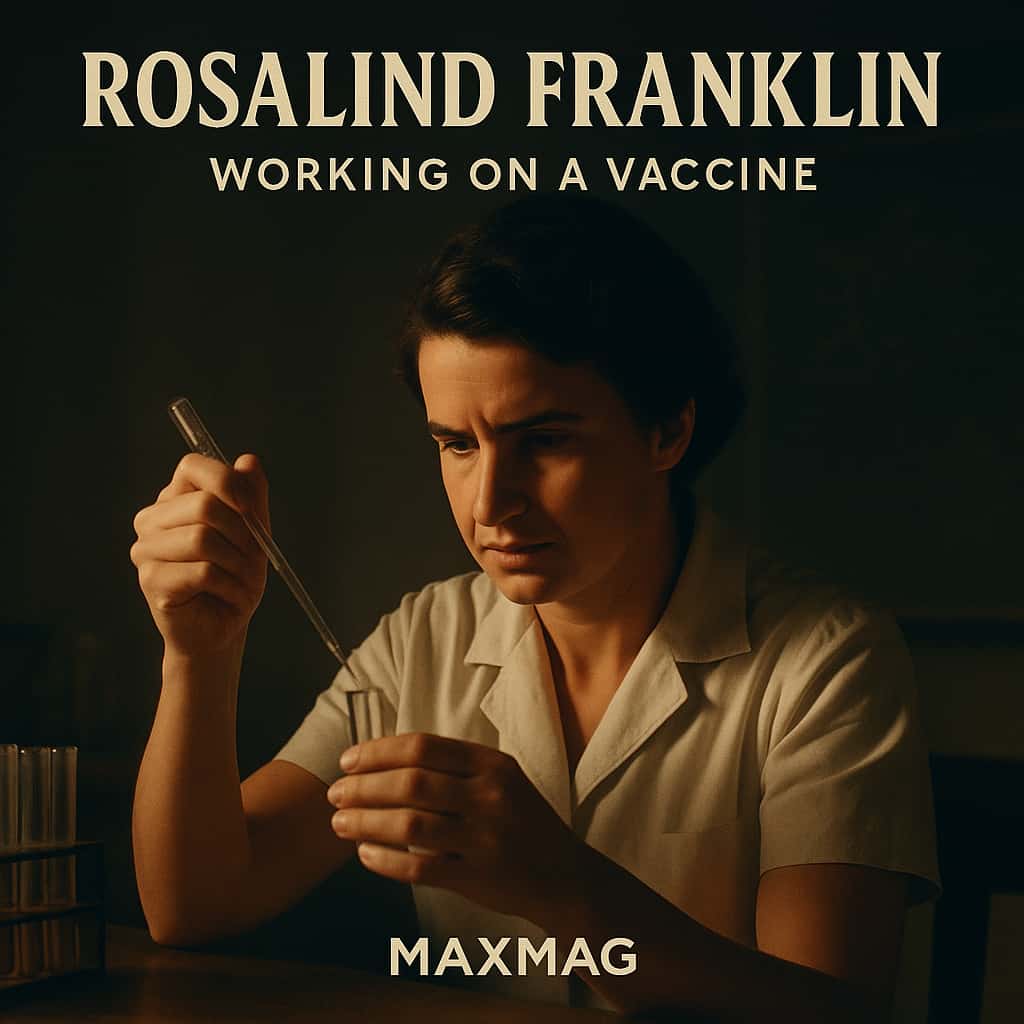
Key works and major contributions of Rosalind Franklin
Seeing the double helix in the shadows
Franklin approached DNA as a molecular biology pioneer in the most literal sense: a scientist who believed that the structure of a molecule must be read off from data, not guessed by intuition. Her laboratory notebooks from King’s are filled with painstaking measurements, calculations and cautious interpretations. She concluded that in at least one form, DNA’s phosphate groups lay on the outside of the molecule, not at the core as some had proposed – a critical step towards the correct model of the double helix.
The famous DNA model unveiled by James Watson and Francis Crick in 1953 relied heavily on the dimensions and constraints revealed by Franklin’s X-ray work, including the repeat distance along the helix and the symmetry of the molecule. A modern Rosalind Franklin biography cannot avoid the fact that her results, some unpublished, were shown to Watson and Crick without her explicit permission, via an internal report and the sharing of Photo 51. That borrowing – and the limited acknowledgement she received in their landmark Nature paper – became the seed of one of science’s most enduring credit disputes.
Beyond DNA: coal, carbon and the architecture of viruses
The narrative of “the woman behind DNA” risks shrinking Franklin’s scientific world. Long before she turned to genetics, her work on coal and carbon produced a lasting framework for understanding how industrial materials behave at the atomic level – research that remains cited in modern materials science.
After leaving King’s in 1953, weary of conflict, she joined J. D. Bernal’s group at Birkbeck College. There she applied her crystallographic skills to viruses, particularly tobacco mosaic virus and the poliovirus. By mapping how these viral particles were built from repeating protein subunits, she helped establish principles that still underpin structural virology and vaccine design. In any rounded Rosalind Franklin biography, these virus studies occupy a central place: they show a scientist widening her scope, not defined solely by a single molecule but by a style of inquiry – extracting order from the speckled pattern on a piece of photographic film.
Methods, collaborations and working style
A perfectionist in the age of “model builders”
Franklin’s working style was famously rigorous. She distrusted speculative model-building unmoored from data, a stance that brought her into philosophical conflict with Watson and Crick, whose style of molecular biology history emphasised bold, sometimes playful hypothesis-making. She preferred to let the diffraction spots “tell” the story, insisting that any proposed structure survive the most demanding quantitative tests.
This insistence on precision shaped both the strengths and the frustrations that run through the Rosalind Franklin biography. It meant her published results were of exceptionally high quality, but it also meant she was slower to publish speculative conclusions that might have staked an earlier claim to DNA’s structure. Where her rivals were willing to sketch an elegant model and refine it later, Franklin wanted every line nailed down by experiment.
Collaboration, conflict and the lab as a human space
The stories that surface from Franklin’s colleagues depict a complicated collaborator: fiercely loyal to high standards, often impatient with woolly thinking, sometimes brusque to the point of rudeness. In Paris she was remembered as warm and sociable; at King’s, in an atmosphere of class anxiety, gender bias and poor communication, she came across as “difficult”. Modern analyses of the Rosalind Franklin biography stress that this label tells us as much about her environment as about her personality.
At Birkbeck, working with Bernal and a close-knit virus team, she flourished. Students recall not only an exacting supervisor but also someone who took them hiking, shared jokes and, when her health allowed, threw herself into the life of the lab. Her collaborations produced a string of important virus papers even as she began treatment for the cancer that would kill her. In these later years, the Rosalind Franklin legacy is one of scientific generosity: sharing methods, data and insights in a way that strengthened an emerging community of structural biologists.
Controversies, criticism and misconceptions
How the Rosalind Franklin biography became a story of a “wronged heroine”
The most widely known controversy in the Rosalind Franklin biography centres on the events of 1952–53, when her DNA data were circulated without her express consent and used by Watson and Crick as they built their double-helix model. Watson’s 1968 memoir The Double Helix portrayed Franklin in unflattering, often sexist terms, casting her as an obstructive figure who failed to understand the implications of her own data. In response, Anne Sayre wrote a book-length defence, cementing Franklin’s posthumous image as a brilliant but wronged heroine.
Recent scholarship has added nuance. A 2023 article in the journal Nature argues that the “stolen data” narrative oversimplifies what was, in reality, a messy and collaborative process within British science, where information often flowed informally and the boundaries of ownership were ill-defined. Yet the article also makes clear that Franklin’s experimental contribution was indispensable and insufficiently recognised in real time – a dual truth that any honest Rosalind Franklin biography must hold together.
Gender, antisemitism and the culture of mid-century laboratories
Franklin worked in institutions dominated by men who were, at best, unaccustomed to female peers and, at worst, openly hostile. Some colleagues at King’s dismissed her as a “bluestocking” – a coded term for an intellectual woman who did not know her place. As a Jewish scientist in post-war Britain, she also navigated subtle and not-so-subtle antisemitism. These biases, while rarely named directly in earlier accounts of the Rosalind Franklin biography, shaped the opportunities she was offered and the ways her behaviour was interpreted.
Modern commentators often use Franklin as a case study when discussing how women in science struggle to receive proper credit. Her experience has become a touchstone in debates about authorship, mentorship and workplace culture, encouraging institutions to examine how credit is allocated and to support more inclusive environments for future generations of scientists.
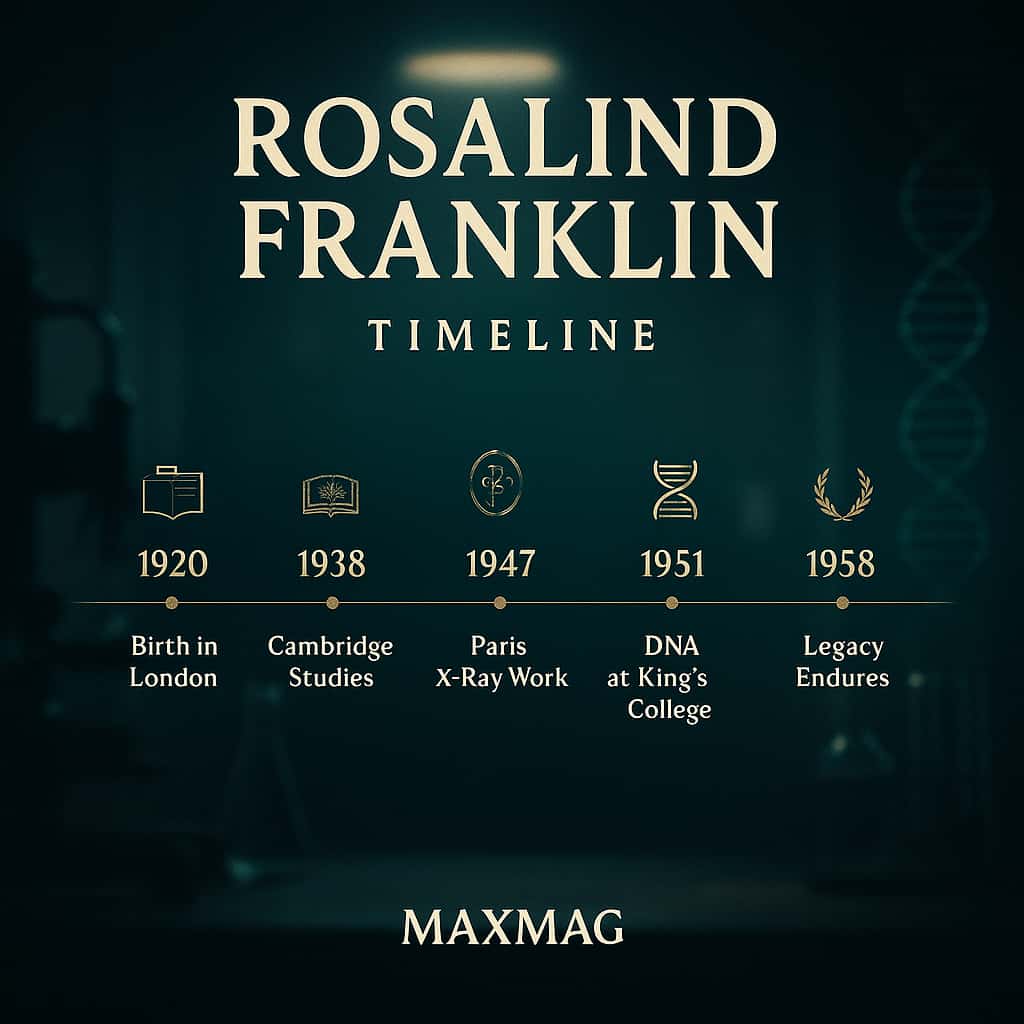
Impact on molecular biology and on wider society
The structural revolution in biology
Franklin’s technical achievements are woven into the foundations of molecular biology history. Her DNA photographs, together with her quantitative analysis, helped define the parameters of the double helix – a structure that has become an icon of modern science. Her work on coal and graphite influenced energy research and materials science, while her virus studies laid ground for later explorations of how pathogens assemble and infect.
If Watson and Crick’s model provided a symbolic “eureka” moment, Franklin’s contribution embodied the quieter revolution of method: the insistence that biology, too, could be understood through hard numbers, diffraction patterns and three-dimensional models. Without such work, the spectacular advances of the genetic era – from DNA sequencing to gene editing – would have far shakier roots.
Symbol of women in science, from textbooks to popular culture
In recent decades the Rosalind Franklin biography has leapt from specialist histories into the mainstream. Plays like Photograph 51, popular histories and novels of “hidden figures” have placed her alongside Marie Curie and Katherine Johnson as emblematic of women whose essential contributions were minimised or erased.
This cultural visibility has both benefits and drawbacks. On the one hand, Franklin now serves as an inspiring figure for young scientists, particularly women, who see in her story proof that brilliance can exist even where recognition fails. On the other hand, reducing her to a symbol of victimhood risks flattening the genuine complexity of her life: her humour, her love of the outdoors, her satisfaction in rigorous work, and her pride in achievements far removed from DNA. The best accounts of the Rosalind Franklin legacy try to hold both truths at once.
Personal beliefs, character and private life
Mountains, music and a stubborn inner compass
A fully rounded Rosalind Franklin biography must leave the laboratory from time to time. Friends describe a woman who loved mountain climbing, long walks and the clarity that came from time outdoors. She enjoyed music and theatre, maintained close friendships, and could be witty and playful away from the lab bench.
Franklin’s sense of justice was strong. She volunteered with refugees before and after the war, and her Jewish identity, in the shadow of the Holocaust, sharpened her awareness of prejudice. She did not speak much about feminism as a doctrine – the language of second-wave feminism had yet to crystallise – but she lived its dilemmas daily, insisting on being treated as an equal in environments that often did not know how.
Friendships and the limits of the archive
Much of what we know about Franklin’s inner life comes from letters to family and friends, preserved in archives and brought to light in later biographies. They reveal frustration, certainly, but also affection and curiosity. She wrote warmly of colleagues in Paris and at Birkbeck, and even in her most difficult periods at King’s she focused more on the science than on personal grievances.
Like many scientists of her generation, she kept her romantic life, if any, largely private. Some biographers have speculated about whether she sacrificed personal relationships for work, but the evidence is fragmentary. In this respect, the Rosalind Franklin biography confronts a simple truth: archives preserve experiments and correspondence more faithfully than they preserve the complex interior worlds of the people who wrote them.
Later years and final chapter of Rosalind Franklin
Illness amid intense productivity
In 1956, while on a work trip to the United States, Franklin noticed abdominal swelling. Back in London she was diagnosed with ovarian cancer. Surgery and radiation treatments followed, but she returned to the lab whenever she could, determined to continue her virus research. In 1956 and 1957 alone, her group produced more than a dozen papers – an extraordinary output given her health.
Colleagues recall her working in bursts between hospital stays, focusing fiercely on data and on mentoring younger scientists. She spent convalescent periods with friends and with her brother’s family, finding solace in domestic bustle and in the ordinary pleasures of reading and conversation. The closing chapters of the Rosalind Franklin biography are marked by this contrast: bodily fragility alongside intellectual resilience.
Death at 37 and immediate aftermath
Rosalind Franklin died on 16 April 1958 at the age of 37. Four years later, the Nobel Prize in Physiology or Medicine was awarded to Watson, Crick and Wilkins for the discovery of DNA’s structure. By the rules of the Nobel Foundation, the prize is not awarded posthumously; even had her contributions been fully acknowledged, she would not have shared in it. Still, the omission reinforced a perception – widely echoed in later decades – that the woman whose data had made the double helix possible had been written out of its official story.
Yet even in the years immediately after her death, those who had worked most closely with Franklin were already pushing back against her erasure. Aaron Klug, who later won a Nobel Prize for his own structural studies, championed her role and helped publish work from her unfinished manuscripts, ensuring that the scientific record reflected more of what she had done.
The lasting legacy of the Rosalind Franklin biography
Re-reading the Rosalind Franklin biography in the 21st century
Today, reading a Rosalind Franklin biography means engaging with multiple overlapping stories. There is the technical tale of a DNA structure pioneer, whose X-ray diffraction patterns made the geometry of the double helix visible to human minds. There is the institutional story, in which universities, laboratories and funding bodies decide whose names go on papers, whose photographs go in corridors, whose statues are commissioned. And there is the cultural story, where Franklin appears in plays, novels and journalism as both scientist and symbol.
Public understanding of her role has shifted substantially. Where once she was a footnote in the DNA saga, she is now often foregrounded in discussions of women in science. At the same time, historians caution against replacing one myth with another: Franklin was neither a passive victim nor an infallible saint, but a working scientist, with strengths, blind spots and constraints.
Why Rosalind Franklin’s story still matters
Franklin’s name is now attached to research institutes, university buildings, medical schools and even a planned Mars rover, a sign of how institutions are trying to weave her into the official fabric of scientific memory.
Her story continues to resonate because it speaks to bigger questions: Who is visible in the history of science, and who remains in the background? How do we recognise collaborative work in an era that still prizes singular genius? And what does it mean to insist, as Franklin did, that careful data should trump charisma, no matter how slowly it accumulates? A thoughtful Rosalind Franklin biography invites readers to see behind the headline moments and to appreciate the years of disciplined labour that make scientific breakthroughs possible.
Frequently Asked Questions about Rosalind Franklin biography
Q1: Who was Rosalind Franklin in the history of DNA research?
Q2: What is Photo 51 and why is it central to the Rosalind Franklin biography?
Q3: Did Rosalind Franklin know that her data were being shared with Watson and Crick?
Q4: Why did Rosalind Franklin not receive a Nobel Prize for the discovery of DNA's structure?
Q5: What other scientific fields did Rosalind Franklin contribute to besides DNA?
Q6: How does the Rosalind Franklin biography influence discussions about women in science today?

